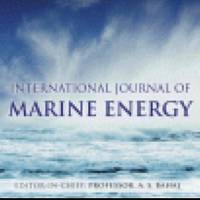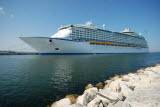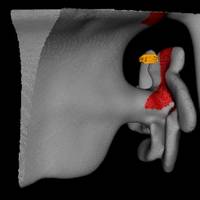Standardization for Safer Shipping of e-Navigation & Training

e-Navigation aims to harmonize navigation systems and ultimately make the mariners’ job easier, but its implementation will necessitate extensive changes to maritime training. Dr. Michael Baldauf of the World Maritime University, discusses the reasons for change, progress made so far, and further changes that will need to be made to reap the benefits of e-Navigation. In recent years, bridges have become increasingly ‘smart’ with a plethora of new equipment, systems and interfaces.
International Journal of Marine Energy Launched

Publishers Elsevier launch the 'International Journal of Marine Energy', a new journal devoted to publishing fundamental and applied research and case studies relevant to all forms of marine and ocean energy. Professor AbuBakr Bahaj, Professor of Sustainable Energy and Head of the Energy and Climate Change Division at the University of Southampton, will serve as Editor-in-Chief. The journal targets topics such as fluid mechanics, design, modelling and optimisation of devices and arrays/farms…
New Fatigue Model Leads to More Durable Ships

Heikki Remes, a researcher at the Aalto University in Finland, has developed a model making it possible to determine how fatigue sets in with various welded steel materials. The model allows for the development of lighter structures, and as a consequence, more energy-efficient ships. By utilizing modern manufacturing technology and new materials, it is possible to achieve more efficient structures than the ones that currently exist. In addition, better physical models are needed to ensure structural strength, Remes said.
New Fatigue Model Leads to More Durable Ships

Heikki Remes, a researcher at the Aalto University in Finland, has developed a model making it possible to determine how fatigue sets in with various welded steel materials. The model allows for the development of lighter structures, and as a consequence, more energy-efficient ships. By utilizing modern manufacturing technology and new materials, it is possible to achieve more efficient structures than the ones that currently exist. In addition, better physical models are needed to ensure structural strength, Remes says.
Autonomous Robot Maps Ship Hulls for Mines

Algorithms enable robot to navigate and view propellers and other complex structures. For years, the U.S. Navy has employed human divers, equipped with sonar cameras, to search for underwater mines attached to ship hulls. The Navy has also trained dolphins and sea lions to search for bombs on and around vessels. While animals can cover a large area in a short amount of time, they are costly to train and care for, and don’t always perform as expected. In the last few years, Navy scientists…
AIS: Operator Feedback Analyzed
Seaways, the international journal of The Nautical Institute, reports this month that although most mariners seem generally satisfied with the operation of the new Automatic Identification System (AIS), current users have reported certain anomalies. The Institute’s Papers and Technical committee has now identified some key causes and recommendations. A common fault was that ships are transmitting inaccurate information such as incorrect heading (which may be due to poorly defined offset data) or inaccurate data pertaining to static, dynamic or voyage information (i.e. being underway whilst AIS signal is indicating being stationary).
Ancient Ship Timbers Found in Desert
The oldest remains of seafaring ships in the world have been found in caves at the edge of the Egyptian desert along with cargo boxes that suggest ancient Egyptians sailed nearly 1,000 miles on rough waters to get treasures from a place they called God's Land, or Punt. Florida State University anthropology professor Cheryl Ward has determined that wooden planks found in the manmade caves are about 4,000 years old - making them the world's most ancient ship timbers. Shipworms that had tunneled into the planks indicated the ships had weathered a long voyage of a few months, likely to the fabled southern Red Sea trading center of Punt, a place referenced in hieroglyphics on empty cargo boxes found in the caves.





